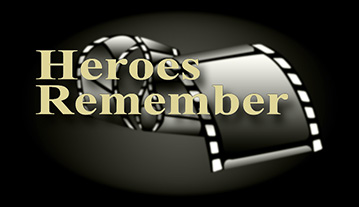Differentiation of Signals (Part 1 of 2)
Heroes Remember
Differentiation of Signals (Part 1 of 2)
Transcript
The reason we could identify them and I, you know, this is sixty,
seventy years ago, apparently they, the Brits had access to a,
a German publication. When a German unit was created in Germany
and had signals equipment, they were assigned a certain page
in that book, "Call Signs and Frequencies" which they suppose to
use. There were given five frequencies and twenty call signs
they, they used. And let's say they're on page forty-five, right.
In that book of a hundred and eighty pages, I don't know how many
pages are in it, but we had that book. So, if I, and every day
about five o'clock in the morning, all the German units in France
on the Russian front, in Italy, in the desert, changed
call signs and frequencies. They did it every day.
But if you identified one unit and identified the number they
used, so if they said forty-four, if he was on page fifty-two,
he added forty-four to fifty-two. He's now on page one hundred
and twelve. There, there it is. This is, so we could identify
units very quickly and there was quite a, quite a competition.
Every day, every day, quite a competition. And we had what they
call secure line, secure lines, we could talk to people. We had
a British unit and eventually an American unit also doing the
same thing but a little further along the coast line, and we were
we were competing who would get the, the, the qualifier
for the day and then we'd pick up the phone, "It's forty-two!"
But this was all scrambled.
Description
Mr. Pollak describes how they were able to differentiate the origin of one signal from another.
Fred Pollak
Mr. Pollak was born May 20, 1919, in Vrezno, Czechoslovakia, a small town in the German part of Bohemia. In September of 1938, his family was expelled from Vrezno and had to go inland to Prague. They arrived in Canada as refugees in August of 1939 and lived in Prescott, Ontario. Mr. Pollak eventually joined the Canadian Army, enlisting as a typist. At the end of the war, Mr. Pollak monitored radio transmissions for German traffic and was also employed as an interrogator of war criminals in Belsen.
Meta Data
- Medium:
- Video
- Owner:
- Veterans Affairs Canada
- Duration:
- 02:00
- Person Interviewed:
- Fred Pollak
- War, Conflict or Mission:
- Second World War
- Location/Theatre:
- France
- Battle/Campaign:
- Northwest Europe
- Branch:
- Army
- Occupation:
- Signals Intelligence
Related Videos
- Date modified:



